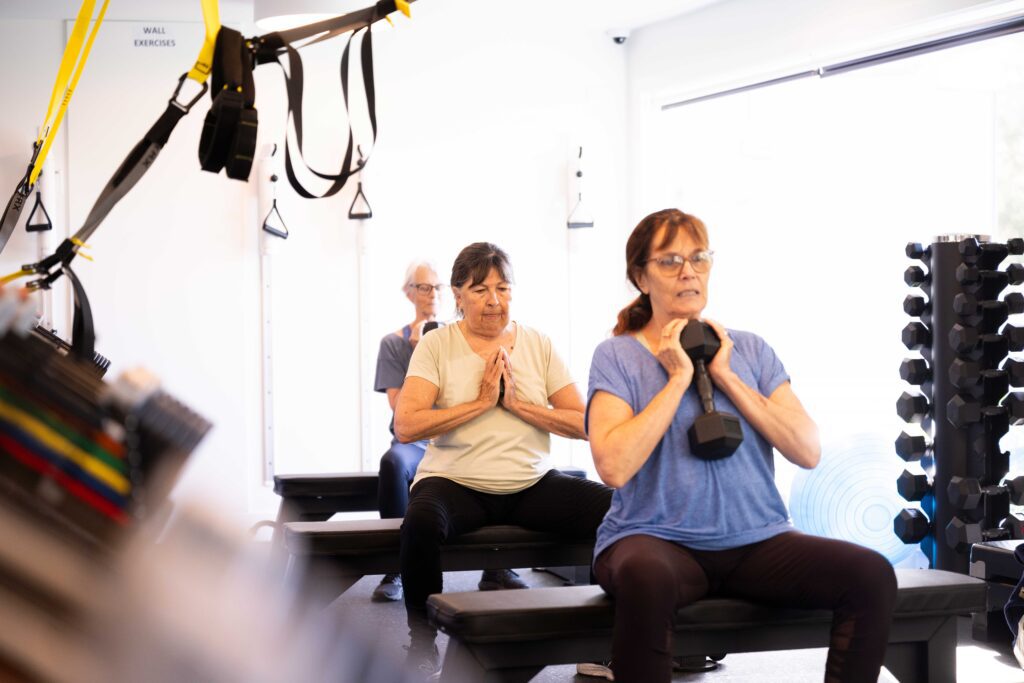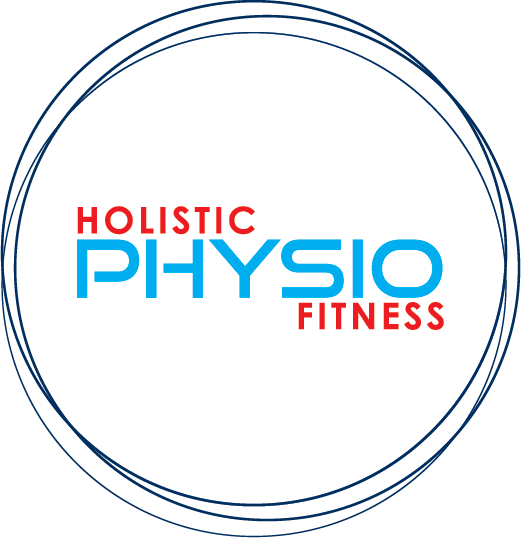
In recent years, more Australians are moving away from a “quick fix” approach to health and instead embracing long-term, preventative care. At Holistic Physio Fitness, we see this shift every day — people are realising that pain management and injury recovery are only part of the story. The real power lies in combining physiotherapy with exercise physiology to achieve not just recovery, but ongoing strength, mobility, and resilience.
In this blog, we’ll explore what holistic physiotherapy really means, how it differs from traditional treatment, and why it’s becoming the future of healthcare in Australia.
What Does “Holistic Physiotherapy” Mean?
Holistic physiotherapy goes beyond treating the immediate pain or injury. Instead of focusing on a single joint, muscle, or symptom, it looks at your entire lifestyle — from how you move each day to your stress levels, diet, sleep, and overall health.
At Holistic Physio Fitness, we integrate:
-
Physiotherapy for injury assessment, treatment, and rehabilitation.
-
Exercise Physiology to build long-term strength, endurance, and mobility.
-
Lifestyle advice that supports recovery and prevents setbacks.
This approach means you’re not just managing pain — you’re building a stronger, healthier version of yourself.
Why Exercise Physiology is the Game-Changer
Exercise physiology is still a relatively new term for many Australians, but it’s quickly gaining recognition. An Accredited Exercise Physiologist (AEP) is a health professional who designs safe, evidence-based exercise programs to manage chronic health conditions, aid recovery from injury, and improve overall performance.
Some of the conditions we support include:
-
Chronic pain
-
Diabetes and cardiovascular disease
-
Post-surgery rehabilitation
-
Weight management
-
Stress, fatigue, and mental health support
By combining physiotherapy and exercise physiology, we’re not just helping people recover from injuries — we’re future-proofing their health.
The Australian Health Shift: From Treatment to Prevention
Australia’s healthcare system has long focused on treatment — waiting until something goes wrong, then trying to fix it. But the cost of chronic illness and lifestyle-related conditions continues to rise. According to the Australian Institute of Health and Welfare, over 50% of Australians live with at least one chronic condition.
Holistic care is the solution. By addressing the root causes of pain and illness, and using exercise as medicine, people are staying out of hospital, reducing reliance on medication, and enjoying better quality of life.
Why Our Approach Works
At Holistic Physio Fitness, our clients tell us the same thing: “This is different.”
Here’s why:
-
Personalised Care – We take the time to understand your history, your goals, and your lifestyle.
-
Long-Term Focus – Our goal isn’t just to get you pain-free today, but to keep you moving well for years to come.
-
Supportive Environment – Our exercise clinic is designed to make rehabilitation and training accessible, not intimidating.
-
Results That Last – Clients don’t just recover; they thrive with improved strength, mobility, and energy.
Who Can Benefit?
The beauty of holistic physiotherapy and exercise physiology is that anyone can benefit. Whether you’re an athlete returning from injury, a busy professional managing stress, or someone living with chronic pain, this approach adapts to your needs.
It’s not about short-term fixes — it’s about creating a sustainable, healthy lifestyle.
The Future of Healthcare in Australia
As more Australians recognise the importance of preventative health, holistic physiotherapy and exercise physiology will play a central role. This model doesn’t just treat — it empowers people to take control of their health.
At Holistic Physio Fitness, we’re proud to be part of this shift. By combining professional physiotherapy with evidence-based exercise physiology, we’re helping our clients move better, recover faster, and live stronger.
Final Word
If you’re ready to experience the future of healthcare, book an appointment with our team at Holistic Physio Fitness. Whether you’re dealing with pain, recovering from injury, or simply want to improve your overall health, our holistic approach will help you reach your goals.
👉 Book your consultation today

When diagnosed with cancer, the journey ahead can feel daunting. With the physical and emotional challenges that come with treatment, many people often wonder how they can maintain their strength and quality of life. One powerful tool that’s gaining recognition in cancer care is exercise. From maintaining muscle mass during chemotherapy to improving overall well-being, exercise has shown to provide significant benefits for cancer patients. Exercise physiology plays a key role in understanding these benefits and developing safe, effective exercise programs tailored to each individual’s needs.
Why is Exercise Important for Cancer Patients?
Cancer treatment, such as chemotherapy, radiotherapy, and surgery, can be physically taxing. Patients often experience fatigue, muscle wasting, weight loss, and a decrease in strength and endurance. These effects can have a significant impact on daily activities and overall quality of life. However, research shows that exercise can help mitigate these side effects, improving both physical and emotional health.
Exercise can be defined as any planned, structured, and repetitive physical activity that improves or maintains physical fitness. For cancer patients, regular exercise helps reduce the impact of cancer-related fatigue, boosts energy levels, strengthens the immune system, and supports the maintenance of muscle mass and bone density. Exercise physiology focuses on understanding the body’s response to physical activity, and this knowledge is crucial when designing exercise programs for cancer patients.
Maintaining Muscle Mass During Chemotherapy
One of the most concerning effects of chemotherapy is muscle wasting, also known as cancer cachexia. This condition leads to a significant loss of muscle mass and strength, which can worsen fatigue and limit mobility. Chemotherapy targets rapidly dividing cells, which include not only cancer cells but also healthy cells, such as those in muscles. As a result, patients often experience a loss of lean body mass, making it harder to perform everyday tasks.
Exercise, particularly resistance training, has been shown to be effective in countering muscle loss and promoting muscle retention during chemotherapy. Studies have found that engaging in strength-based exercises, such as lifting weights or using resistance bands, can stimulate muscle growth and prevent further deterioration. The key is to start at a manageable level and gradually increase intensity, ensuring that the body is not overstressed.
Exercise physiology plays an essential role in guiding cancer patients through this process. By designing a program that targets the muscles most affected by treatment, exercise physiologists ensure that patients are engaging in the right exercises in the right way to maintain muscle mass safely. Whether through resistance training, functional movement exercises, or even bodyweight exercises, staying active can help patients preserve their strength during treatment.
The Psychological Benefits of Exercise for Cancer Patients
Aside from the physical benefits, exercise also has a profound impact on mental health. A cancer diagnosis and the stress of treatment can lead to feelings of anxiety, depression, and isolation. Exercise has been shown to improve mood, reduce stress, and help manage symptoms of depression, which are common among cancer patients.
Endorphins, the body’s natural mood-boosting chemicals, are released during exercise, promoting a sense of well-being. Furthermore, the routine and sense of accomplishment associated with exercise can foster a sense of control, which is often lost during the cancer journey. These psychological benefits, in turn, can improve adherence to treatment and enhance overall quality of life.
Reducing the Risk of Cancer Recurrence
Research also suggests that regular exercise can help reduce the risk of cancer recurrence. Studies have shown that patients who engage in moderate physical activity after cancer treatment may experience a lower risk of their cancer returning, particularly in breast, colon, and prostate cancer survivors. Exercise can improve immune function, regulate hormones, and reduce inflammation—all factors that play a role in cancer progression.
While more research is needed to fully understand the mechanisms behind this relationship, the evidence so far is promising. For cancer survivors, staying active can be an important step in long-term health management.
Building a Safe and Effective Exercise Program
When it comes to exercise for cancer patients, safety is key. Every individual’s situation is unique, so it’s important to tailor exercise plans to the person’s specific needs, treatment stage, and fitness level. Exercise physiology plays a crucial role in this process, using scientific knowledge of how the body responds to exercise to create a personalised plan that ensures maximum benefit with minimal risk.
The following are some general guidelines for creating an exercise program for cancer patients:
- Start Slow: Begin with low-intensity exercises such as walking, light stretching, or gentle yoga. As strength improves, you can gradually increase the intensity and duration.
- Incorporate Strength Training: Resistance exercises help build muscle mass and counteract muscle loss due to chemotherapy. However, start with lighter weights or resistance bands, and progressively increase as the body adapts.
- Focus on Flexibility and Balance: Cancer treatments can impact flexibility and balance, so incorporating exercises like stretching and balance training can improve coordination and reduce the risk of falls.
- Stay Hydrated and Rested: It’s crucial to listen to your body. Stay hydrated, rest when needed, and ensure that your exercise program is balanced with recovery periods.
- Consult an Exercise Physiologist: Before beginning any exercise regimen, especially during or after cancer treatment, it’s important to consult with a qualified exercise physiologist. They can design a program tailored to your specific needs and ensure that you are exercising safely.
Conclusion
Exercise plays an essential role in managing the side effects of cancer treatment, improving overall physical and mental health, and supporting the maintenance of muscle mass during chemotherapy. Through the guidance of exercise physiology, cancer patients can enjoy a tailored program that helps them stay active and improve their quality of life. Whether you’re currently undergoing treatment or are a cancer survivor, integrating exercise into your routine can provide numerous benefits, supporting your journey towards better health and wellness.
If you or a loved one is going through cancer treatment, don’t hesitate to consult an exercise physiologist to create a plan that works for you. Your body will thank you for it. Read more HERE

